Whenever we have some free time we love taking walks in our family’s timber. There are a few different hiking trails that have been mapped out, and we enjoy taking Fern and Benji out into the woods and letting them run around, discovering all that the forest has to offer. Over the years, we’ve noticed groves of native Pawpaw trees (Asimina triloba) popping up along the creek. We had always heard of the elusive and delicious Pawpaw fruit – the “Midwestern Mango,” the “Indiana Banana” – but until recent years our groves have been too young to produce any extra that doesn’t get gobbled up by the animals first. Tucked into the understory of our timber, the Pawpaws are a quiet presence most of the year. Their large, tropical-looking leaves rustle in the summer shade, and unless you know what you’re looking for, you might not give them much thought. But come September, they remind us they’re here in the most delicious way: by dropping fruit.
This year, just like last, our family has been wandering through the patch to check for ripeness. The fruit hides well, often blending in with the leaves until it’s ready to fall. Then suddenly, the ground beneath the trees is scattered with Pawpaws, soft and fragrant. Many of the Pawpaws we enjoyed as a trail snack; the others we brought home to experiment with. The flavor is hard to describe, it’s somewhere between a banana, mango, and papaya, which checks out since Pawpaws are commonly seen as a “tropical” fruit that is native to the Midwest and Eastern United States.
Unlike apples or pears, Pawpaws don’t last long after picking. Within a few days, they soften and ferment, which makes them hard to find in grocery stores but all the more special in their fleeting season. It feels like an invitation to slow down, to walk the woods a little more often, and to enjoy the gift while it’s here. We’ve noticed the patch itself spreading, sending up new shoots and filling in the understory year after year. The trees seem to know something about community and resilience, building their own network underground while offering shade, habitat, and food above. It’s a living picture of how roots and relationships sustain growth.
As more people discover Pawpaws, through festivals, research plots, or home gardens, it’s exciting to imagine what the next generation of these native trees might bring. New cultivars are being trialed, promising bigger fruit and stronger growth. But no matter how much they’re “improved,” there will always be something magical about stumbling across Pawpaws in a quiet patch of woods, a reminder that some of the sweetest things in life remain wild and unexpected.
In wanting to learn more about Pawpaws we came across a few great resources: PawPaw Primer – A Look Inside the Wonderful World of PawPaws – From Seed to Table, The Pocket Pawpaw Cookbook, Pawpaw: In Search of America’s Forgotten Fruit, and Pawpaws: The Complete Growing and Marketing Guide. These books offer the science and history behind the plant, recipes, and lots of valuable insight into permacultures and food forests. It’s fascinating to read about! Kentucky State University and Savanna Institute also have a wealth of information about the breeding and growing process of Pawpaw trees. We’ve enjoyed our research so far and have even started collecting some seeds – we’re excited to see where this fun project goes!
As the seasons change and summer is ushered out, we feel lucky to have gotten a piece of the Pawpaw harvest this year. Usually August comes and goes and by the time someone says “oh yeah, the Pawpaws are going!” it’s too late! We’ve enjoyed spending our weekends in the woods and the kiddos love helping us by carrying the bags of fruit and picking up the fruits that fell on the ground. It’s safe to say that we have little foragers on our hands. So this September, as the season ramps up on the farm and the fields fill with the work of fall, we’ll keep sneaking away to the pawpaw grove when we can. Because for just a few short weeks, the woods themselves are offering dessert.
~ Maggie Thomas Harper
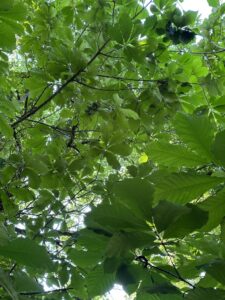
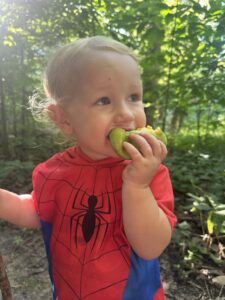

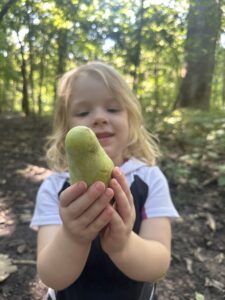
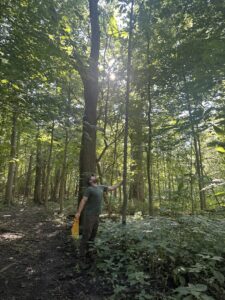
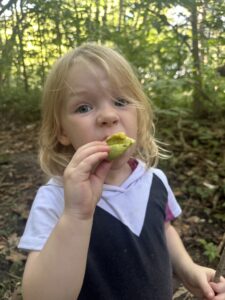


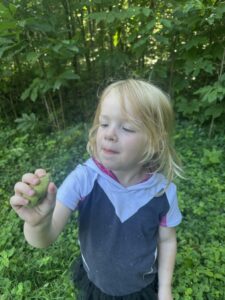
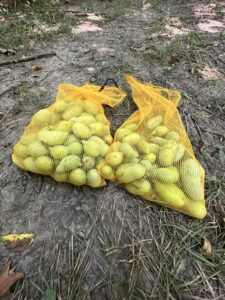
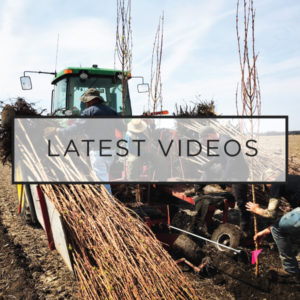



Leave a Reply